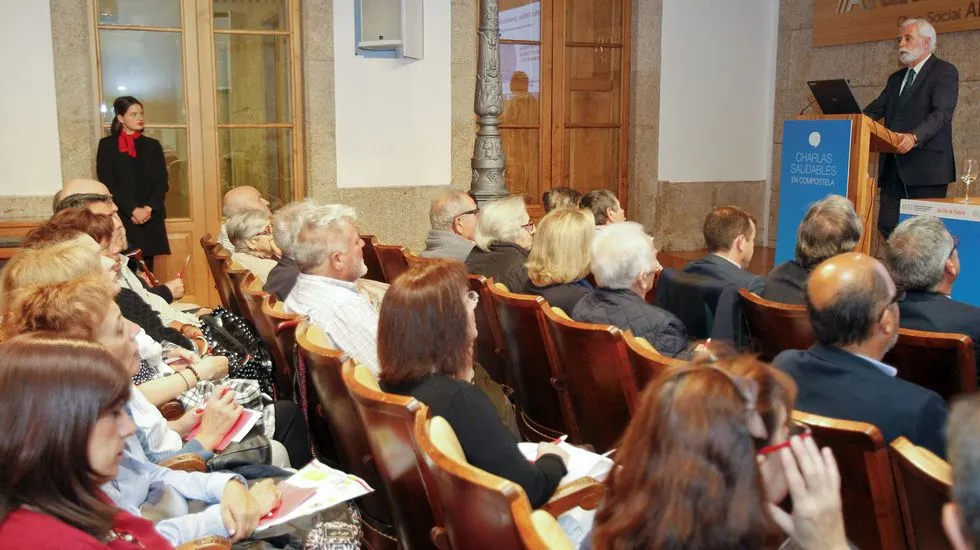Those who suffer from diabetes have a "25 times greater risk of suffering blindness."However, "50 % of blind people had never visited an ophthalmology consultation."
This data was emphasized by Francisco Gómez-ur de Irazazábal, head of ophthalmology of the health area, in a new session of Saudable talks in Compostela in which he addressed the issue.
It was presented by the journalist Eva Millán.The cycle is organized by the integrated xestion of Sergas in Santiago and La Voz de Galicia.
13.8 % of the population in Spain suffers diabetes.In Galicia there are about 188,000 diagnosed and it is estimated that near many others are without treating."The risk that the evolution of diabetes causes serious visual problems is 15 % at 10 years, 70 % at age 15, and 90 % at 30 years" of suffering from evil, he said.
Ophthalmology has advanced in diagnosis and treatment of this disease, and progressed in avoiding invasive evidence, he said.Gómez-ulla highlighted the interest of a team such as Angiooct, which "does not need contrast injections and is faster and faster" for diagnosis;or laser photocoagulation and intraviteal injections.These are painless, but they suppose a high cost.
The rapporteur referred to new treatments that are investigated, and also highlighted the possibilities of surgery.He put practical cases of patients, such as an architect who at 23 needed to be operated for suffering serious bleeding in the eye because of diabetes and has evolved well and after several years he works in that profession normally.He also projected two, shocking videos, on the process to extract the blood and clean the interior of the eye, to return the view to a diabetic patient.
The cataract operations, in which an intraocular lens is introduced, was another issue that addressed.There are surgeries that last about ten minutes, that do not require points, and are outpatient, because they do not require the patient to be admitted to the hospital.
After his speech, he answered several questions from the public.He announced as a goal for 2017 optimizing teleophthalmology in the health area, which has the advantage that "the patient does not travel, the images travel."


